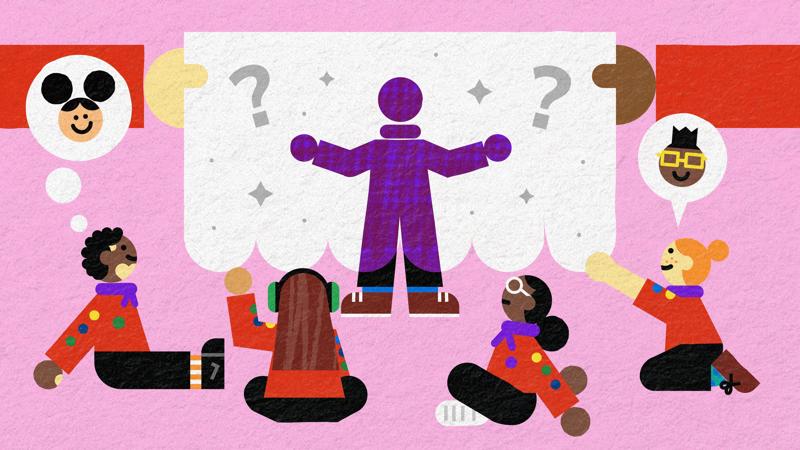
Play Guess Who
You’ll need
- Large blanket or bed sheet
- Ball (optional)
Before you begin
- Use the safety checklist to help you plan and risk assess your activity. Additional help to carry out your risk assessment, including examples can be found here. Don’t forget to make sure all young people and adults involved in the activity know how to take part safely.
- Make sure you’ll have enough adult helpers. You may need some parents and carers to help if you’re short on helpers.
Kandersteg International Scout Centre (KISC), up in the mountains of Switzerland, is the World Scout Centre. It's a place where Scouts across the world have been coming together since 1923.
Planning this activity
- This game works best with teams of around 5 to 10 people.
- If you have a large group, you may want to split into four teams, and bring two sheets.
Playing the game
- Everyone should spend a few minutes finding out each other’s names. A fun way to do this is if everyone could get into a circle and start throwing a ball to each other. When someone catches the ball, they say their name and throw the ball to another person. Keep playing until everyone’s had a turn. To make it harder, you could add in another ball or ask people to shout someone else’s name before throwing the ball to that person.
- When you’re ready, everyone should get into two teams.
- Two people should stand between the two teams. They should hold up a large sheet, so that the two teams can’t see each other. This could be two adult volunteers or one person from each team.
- Next, one person from each team should be chosen to quietly creep up to the sheet and wait behind it.
- When both players are ready and in position, the people holding the sheet should count to 3 and then drop the sheet.
- Each player should try to name the other person as quickly as they can. The aim is to be the first to name the person from the other team.
- Keep playing until everyone’s had at least one turn to be the mystery player.
Reflection
This game gives everybody the opportunity to learn the names of everyone in their group. Why it’s good to learn each other’s names? How does it make you feel when someone calls you by your name? The game needed you to think quick and shout out the name of the person behind the sheet. Was this easy or hard to do? Did you get the name right every time? How did you work together as a team to guess the right name?
Safety
All activities must be safely managed. You must complete a thorough risk assessment and take appropriate steps to reduce risk. Use the safety checklist to help you plan and risk assess your activity. Always get approval for the activity, and have suitable supervision and an InTouch process.
- Active games
The game area should be free of hazards. Explain the rules of the game clearly and have a clear way to communicate that the game must stop when needed. Take a look at our guidance on running active games safely.
- The player who doesn’t win the round could join the opposite team. You could continue to play until all the players are on the same team.
- Teams could score a point each time they win a round. You could set a target so it’s the first group to reach a certain number of points that wins, or you could add up the points earned for a final score once everyone’s had a go to find a winning team.
- This game can be played sitting or standing – whichever way works best for everyone.
- If you’re looking for a name game to play that uses sounds and your hearing to work out who’s who instead, take a look at ‘Skippyroo kangaroo’.
- This could be a good opportunity to learn about sign names, which are used in sign language. A sign name is a special sign used as an easy/unique way to identify someone, instead of fully fingerspelling their name. Find out more about sign names.
All Scout activities should be inclusive and accessible.